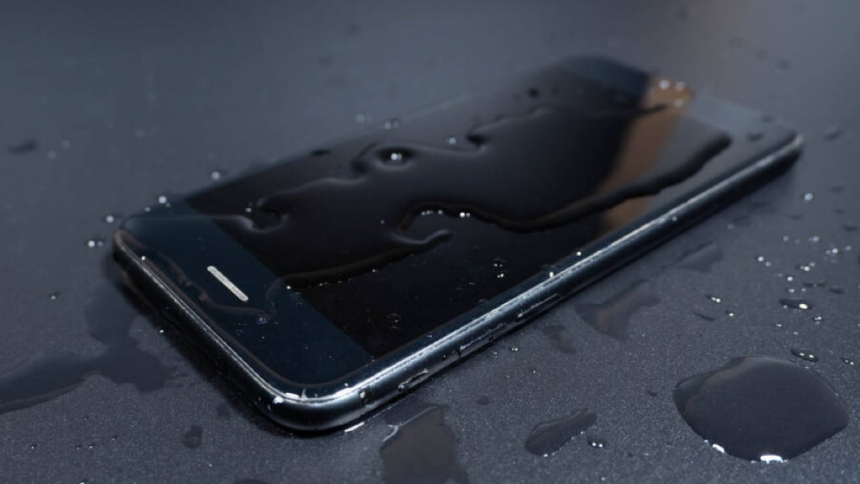Water and electronics don’t mix — and when your phone gets soaked, panic is often the first reaction. Whether it slipped into a toilet, got caught in the rain, or took a dive into the sink, water damage can cause serious harm to your smartphone’s internal components.
But don’t worry just yet — not all water-exposed phones are beyond saving. The key is acting quickly and correctly. What you do in the first few moments after water damage can make all the difference in determining whether your phone can be revived.
Here’s a step-by-step guide on what to do immediately after your phone gets wet — before taking it to a professional repair shop.
1. Remove the Phone from Water Immediately
This may seem obvious, but every second counts. The longer your phone stays submerged, the higher the risk of permanent damage. As soon as you retrieve your phone, turn it off immediately — do not attempt to check if it still works or press any buttons.
If your phone was connected to a charger while getting wet, unplug it carefully to avoid electrical shock.
2. Turn It Off — Don’t Try to Use It
The moment your phone is out of the water, power it down. Don’t try to check notifications, take pictures, or see if the touchscreen works. Operating a wet phone can short-circuit internal components and cause irreversible damage.
Even if it appears fine on the outside, water may have already seeped into delicate areas like the motherboard or battery.
3. Remove SIM Card, Memory Card, and Case
Take off the phone case and any accessories that may be trapping moisture. If your phone has removable parts like the SIM card, SD card, or battery (on older models), carefully take them out and place them on a dry surface.
This will help increase air circulation and prevent further internal corrosion.
4. Gently Dry the Exterior
Use a soft, absorbent cloth or paper towel to blot off excess water from the phone’s surface. Be gentle — don’t shake or blow air into the device, as this can push water deeper into the internal circuitry.
Also, avoid using a hairdryer or putting the phone in the microwave or oven — these heat sources can do more harm than good by damaging internal components.
5. Use the “Dry Rice” Method (with Caution)
You’ve probably heard of the popular “put your phone in rice” hack. While uncooked rice can absorb some moisture, it’s not the most effective drying method and often gets overhyped.
If you do use this trick, make sure:
- The phone is powered off and partially disassembled.
- It’s fully submerged in rice in an airtight container.
- You leave it for at least 24 to 48 hours undisturbed.
However, rice may not absorb moisture trapped deep inside, and rice particles can enter the ports — so use this method with caution. Silica gel packets (like the ones found in new shoe boxes) work much better if available.
6. Leave It Alone for 24 to 48 Hours
Even if your phone appears dry on the outside, moisture might still be inside the components. Resist the temptation to turn it back on too soon. Allow the device to sit in a dry, warm (not hot) place with good airflow for at least one to two full days.
Place it near a fan or in front of a dehumidifier if possible. The longer you can wait, the better the chances of avoiding internal corrosion or permanent damage.
7. Do Not Plug It In Until You’re Sure It’s Dry
Charging a wet phone is one of the worst things you can do — it could lead to short circuits or battery damage. Only plug your phone back in when you’re 100% sure it’s completely dry, both inside and out.
If in doubt, don’t take the risk. Instead, proceed to the next step and seek professional assistance.
8. Visit a Trusted Repair Shop
If your phone still doesn’t turn on after drying, or if it behaves erratically (glitchy screen, unresponsive buttons, or battery issues), it’s time to consult the professionals. Even if it seems to be working fine, hidden internal corrosion may cause future problems, so a post-damage diagnostic is highly recommended.
This is where expert repair services like LYK Repair come in. With a proven track record in handling water-damaged smartphones in Singapore, LYK Repair offers thorough diagnostics, ultrasonic cleaning, and professional-grade tools to assess and repair affected components — all while saving you from potential long-term issues.
Final Thoughts
A water-damaged phone doesn’t always mean the end. By acting quickly and following the correct steps, you can improve your chances of rescuing your device without extensive damage. Remember:
- Don’t turn it on.
- Dry it thoroughly and patiently.
- Seek professional help as soon as possible.
While smartphones are becoming increasingly water-resistant, no device is entirely waterproof. A bit of caution and the right knowledge can go a long way in saving your device — and your data.
If you’re in Singapore and unsure about the extent of the damage, don’t take chances. Reach out to a trusted repair expert to get your phone assessed professionally.
Lynn Martelli is an editor at Readability. She received her MFA in Creative Writing from Antioch University and has worked as an editor for over 10 years. Lynn has edited a wide variety of books, including fiction, non-fiction, memoirs, and more. In her free time, Lynn enjoys reading, writing, and spending time with her family and friends.















